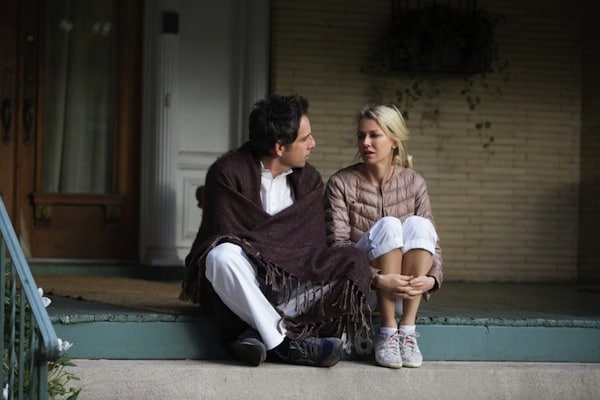Box Office Sabermetrics is a bi-weekly column that will attempt to apply the statistical analysis Sabermetrics, used in Baseball, to the box office results each weekend.
A few weeks ago, I wrote about what an incredibly lucrative year Universal Studios is having despite no existing superhero property in its lineup. This week, we’ll be looking at a similar type of success on the independent film market scale. Indie film distributors A24 have had an all-time, champagne-popping great year. A24 has had a total domestic return of $50 million this year, which is almost four times more than their 2014 total of $13 million. $50 million may be chump change to some studios, but for a small market contender like A24, that’s a huge improvement. $50 million is a lot more than $13 million. They jumped from the 20th highest grossing studio in 2014 to currently the 13th highest this year, a significant leap.
To win in the independent film market, it’s all about knowing your niche audience. A24 operates as a comfortable cross between an arthouse distributor and a genre distributor. It’s no mistake that their biggest hit this year, Ex Machina, is a genre film and got the biggest release of their films with its widest release sitting just above 2,000 theaters. A24 has zigged where other studios zag. They understand that it’s not about banking it all on the big grand slam, the monster box office weekend. It’s about simply getting on base and staying consistent. Having a slugger in your lineup doesn’t matter if nobody is there for him to drive in. To help us evaluate A24’s success this year in the independent film market, the nice folks at Indiewire keep track of a running list of the 20 highest independent domestic grossing films of the year each week.
A24 has three films in the top 20 of the year so far, which is more films than any other distributor in that group has. Ex Machina is the slugger on the team. Against a $15 million budget, A24 put out Alex Garland’s science fiction psychological thriller during the Spring, and watched it blossom into the second highest grossing independent film of 2015 domestically (The Woman in Gold takes the top domestic spot) with a whopping $25 million return. Tack on the foreign market intakes and Ex Machina rounds third base headed for home with a massive $36 million return worldwide. Right behind the big bat are some other formidable hitters in the cleanup spots. Amy, the documentary chronicling the rise and tragic death of Amy Winehouse, leapfrogged its $3 million budget with an $8 million domestic take. Amy currently sits as the 8th highest domestic grosser on Indiewire’s list. While We’re Young took in $7.5 million and sits as the 11th highest domestic grosser on Indiewire’s list.
A great statistic used in Baseball is OBP (On Base Percentage), which simply measures how often a batter gets on base. The way it’s calculated is by adding up a player’s hits, walks, and hit by pitches and divide the total by the same total but with sacrifice flies taken into account. It’s basically like your standard batting average, but also taking into account all the ways to reach base, not just hits. Since we don’t really have the same measurements of what qualifies for getting on base (hits, walks, errors), we’re going to make it easier on ourselves and simply look at the average weekly gross for a film during its theatrical run. Going from there, we’ll be tallying up how many weeks it hit the average mark versus how many weeks it didn’t, giving us a batting average. To get OBP, we’ll be adding another tally for how many weeks it had a positive gain from the week before to act as our other means of getting on base. We’re going to figure out the OBP for the three films that A24 has in Indiewire’s Top 20 list to explain why they’ve been so successful this year. For Ex Machina, the average gross per week over its 21-week release was $1.2 million. It topped that for seven weeks of its release. That’s a happy and healthy .333 batting average. To make it OBP, we add the three weeks that it gained more than the previous week, making it 10-21 and that gives us an OBP of .476. In case you’re wondering, the highest career OBP belongs to Ted Williams, and it is .482.
Amy’s average weekly gross was $688 thousand, with it reaching that mark four out of 12 weeks, giving it a batting average of .333 like Ex Machina. Add in the extra mark when it had a positive uptick in gross, (nudging it to 5-12) and you get an OBP of .417. For comparison, the OBP leader in the American League is Mike Trout, with an OBP of .399. That’s right, Amy Winehouse has a higher OBP than last year’s American League MVP. While We’re Young had an average weekly gross of $582 thousand, and hit that mark a tremendous five times out its 13 weeks. That gives it a batting average of .385. Add in the 3 weeks of positive growth from the preceding week (pushing it to 8-13), and you get a whopping .615 OBP. That’s monstrous right there. Not even Bryce Harper, who leads the National League this year with a monstrous .467 and will likely win the MVP award, can match that. A24 is playing big league ball.
And that right there describes why A24 had its biggest year yet, their films have gotten on base a lot. It’s not about the $50 million weekends, it’s about consistency, and A24 has that in its lineup. They’re not done for the year yet either. Latest A24 release Mississippi Grind has just started hitting theaters, and after victory lapping the fall festival awards circuit, Room should expect to make a big splash when it lands a few weeks from now. Basically, there’s still a few more innings for A24 to drive in some more runs.
A24 has had a massive 2015, but they’re already gearing up for an even bigger 2016. On the docket includes Jeremy Saulnier’s follow up to Blue Ruin (My favorite film of 2014), Green Room, along with the most hyped horror film of 2015 in The Witch, Noah Baumbach/Jake Paltrow’s Brian De Palma documentary De Palma, John Cameron Mitchell’s How to Talk to Girls at Parties, and an enticing group of horror/thriller/niche market films in February, There Are Monsters and Into the Forest. Basically, they hope to be looking at 2015 like they’re looking at 2014 now – from up higher.




